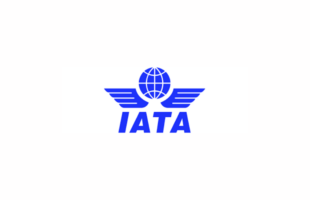The International Air Transport Association (IATA) released February data for global air freight markets showing a sharp increase in year-on-year air freight volumes. Growth measured by freight tonne kilometers (FTK) was up 11.7 per cent in February, compared to February 2014. Capacity grew 7.4 per cent.
Much of the impressive February result is due to the timing of the Lunar New Year activities. Air freight is given a strong boost in the weeks leading up to the holiday, which last year fell in January. In addition, air freight volumes were enhanced by the consequences of congestion at US West Coast ports.
These factors showed up most in the Asia-Pacific results, with carriers in that region recording a rise in volumes of 20.8 per cent year-on-year. Japanese carriers, in particular, benefited from the modal shift owing to congested sea ports in the US.
“A combination of factors made February the strongest month in a very long time for air freight. Nobody expects growth to continue at this pace. As we look forward, however, there is room for optimism. Business confidence improved slightly and trade continues to grow. The year is shaping up in line with a growth expectation of 4-5 per cent,” said Tony Tyler, IATA’s director general and CEO.
IATA Regional analysis in detail
• Asia-Pacific carriers saw FTKs grow 20.8 per cent responding to strong demand ahead of the Lunar New Year. There is also evidence that significant automotive exports from Japan to the US shifted from sea to air. In general Japanese trade is enjoying a positive growth spurt, but emerging Asia and Chinese trade activity appears to be easing slightly. Capacity grew 12.7 per cent.
• European airlines reported a 1.1 per cent rise in FTKs. The European economy remains in the doldrums, and the effects of the Russian sanctions and the region’s recession continue to dampen demand. There is some sign of improvement in manufacturing output, which could lead to stronger air cargo growth in the months to come. Capacity grew 2.4 per cent.
• North American carriers grew 8.7 per cent year-on-year. The region’s airlines also benefitted from the congestion at US West Coast ports. The fundamentals of the US economy show employment, consumer and business confidence all improving, which should underpin volume growth even after the ports issue is resolved. Capacity grew 0.7 per cent.
• Middle Eastern carriers expanded FTKs by 17.6 per cent. The region’s carriers continue to benefit from their strong geographic base, and have further gained by expanding their networks and encouraging freight to transit through their hubs. Capacity grew 19.2 per cent.
• Latin American airlines’ air freight volumes sharply declined by 9.6 per cent in February. Although regional trade activity has increased in recent months, this has not offset the struggles of the Brazilian and Argentinian economies. Capacity grew 1.9 per cent.
• African airlines reported 8.3 per cent growth in FTKs in February. In Africa, the regional trade growth has counterbalanced the weakness in the Nigerian and South African economies. Capacity grew 3.8 per cent.
“The prospect of strengthening air freight growth in 2015 gives an added incentive to the air cargo industry to invest in new procedures and facilities. At the World Cargo Symposium in Shanghai, held in March, the discussions centered on improving the customer experience. Shippers are demanding better and more specialised services. The industry is responding with initiatives including accelerating the implementation of paperless processes, benchmarking cool-chain facilities, and tackling the challenge of illegal lithium battery shipments,” said Tyler.






